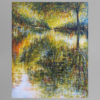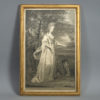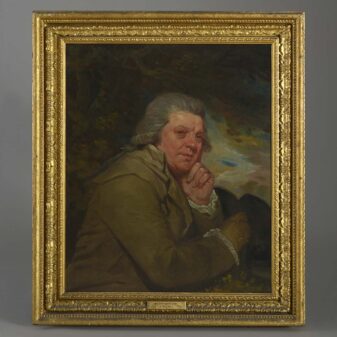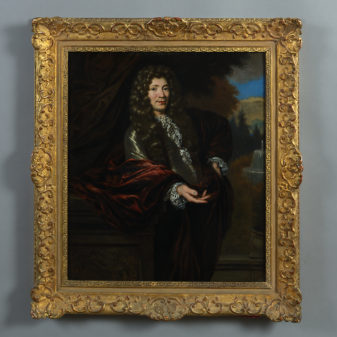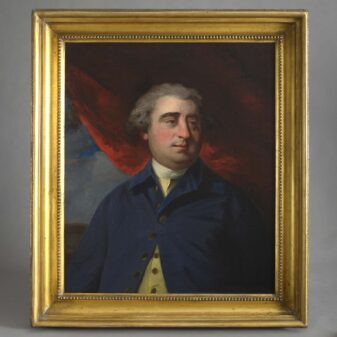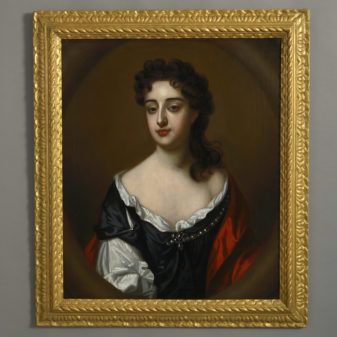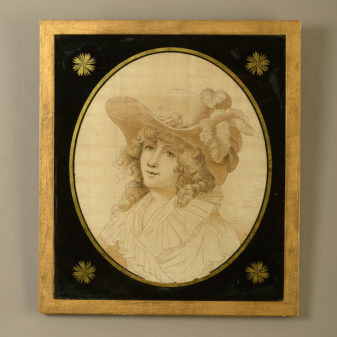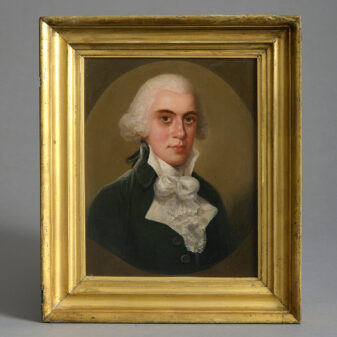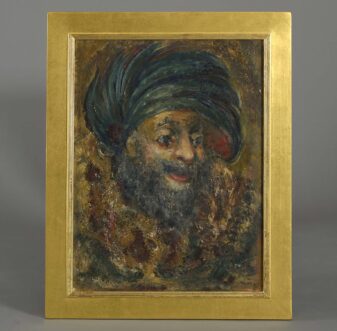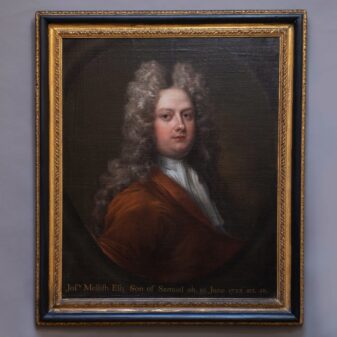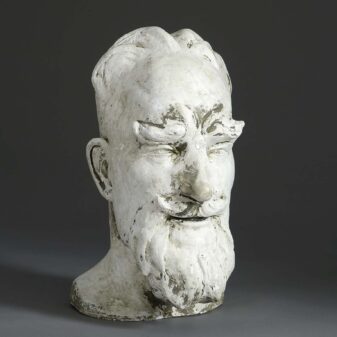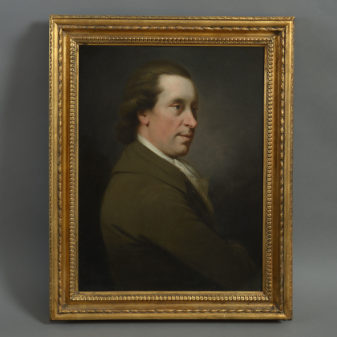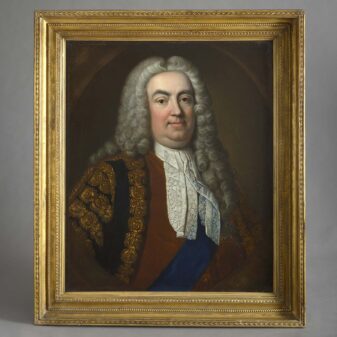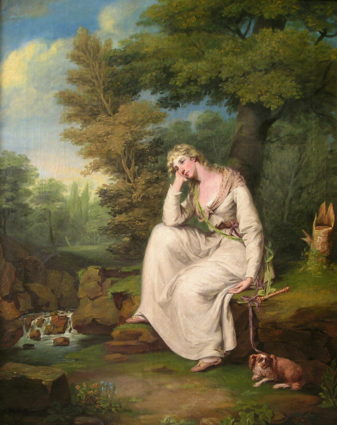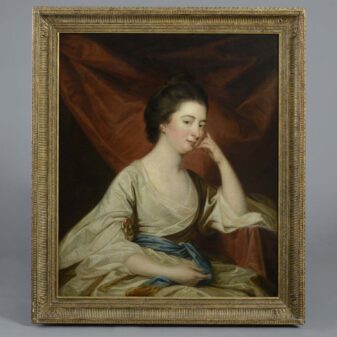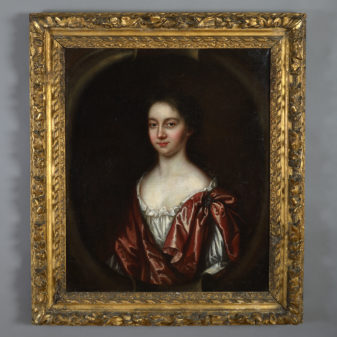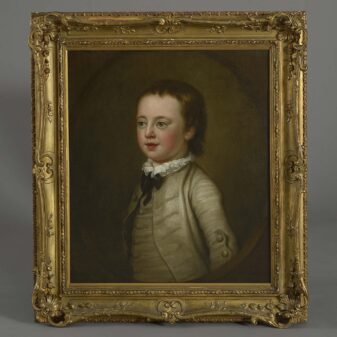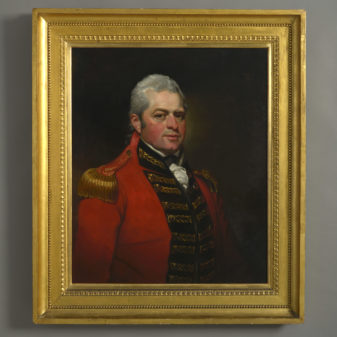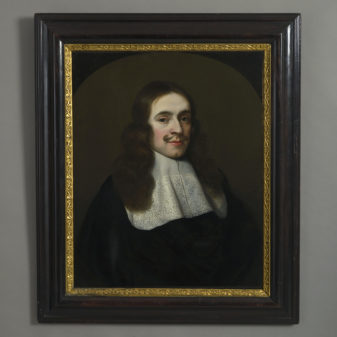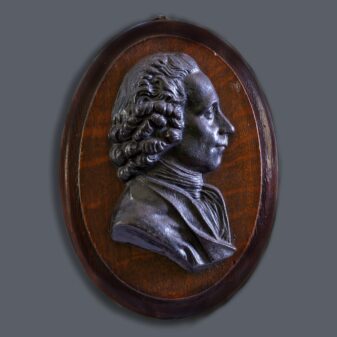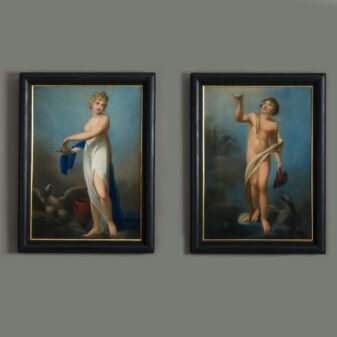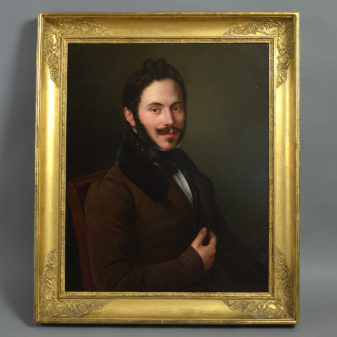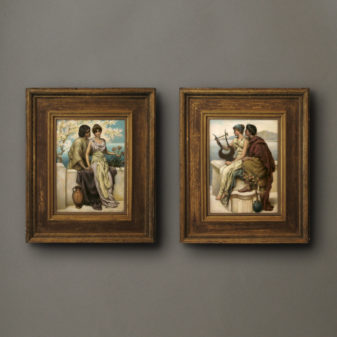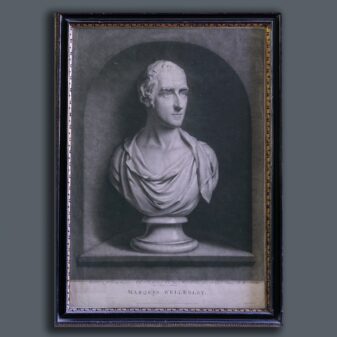Circa 1797 France
An 18th Century Oval Portrait of a Gentleman
£6,500
SOLD
Height 29 inches (73.66 cm)
Width 24 inches (60.96 cm)
Dimensions refer to size of frame.
A late 18th century oval portrait depicting a gentleman in a blue coat and a yellow waistcoat.
Oil on canvas; oval; indistinctly signed, dated 1797; held in an 18th century giltwood frame.
This engaging portrait depicting a fashionably attired, urbane young gentleman betrays seemingly nothing of the severe social and political upheavals and horrors that represented Revolutionary France. Painted in 1787, during the Directoire period (1795-1799), France was still in an uneasy state, though fortunately the high excesses of the Revolution, such as the reign of Terror were in the past. However, this was the year in which the leaders of the Directoire, fearful of the swelling support in the elections for the Royalists ruthlessly reacted with a coup d’état (Coup of 18 Fructidor). These uneasy times, surprisingly found an outlet in fashion, indeed in many ways it became an increasingly important aspect in recognizing a sympathetic supporter of shared political beliefs, with the blatancy of the revolutionary cockade seen increasingly as a thing of the past.
The portrait presented here, therefore takes on a far more intriguing aspect when considered in this light. There is an air of elegance of the ancien régime about his dress and particularly the scarf or cravat being so elegantly tied in a bow. The colourful yellow and mauve stripped double breasted waistcoat is striking and together with the cut of the hair, enough to suggest that the individual was sympathetic to the feelings of the jeunesse dorée, a large group of fashionable young men, mainly middle-class, who in the aftermath of the terror pursued a vigorous campaign against the Jacobins and the dull, thuggish nature of the revolution. Professor Aileen Ribero notes that there was a certain decadence during this period and suggests that it rests partly on the “intensified enjoyment of the pleasures of life, achieved by a new, ambitious and rather raffish group of people who had often made their fortunes in rather dubious ways. It was a society in the process of being formed, full of rough edges, but in a few years considerably refined”. Certainly each of the five leaders of the Directoire held court at the Luxembourg palace, the richest being that of Barras, who liked to imitate the style of the ancien régime. In light of this it is no surprise that the more flamboyant styles favoured by the jeunesse dorée continued to have influence long after their significance as a political force was spent.
So by the date of this portrait our sitter is actually going against the tide to a certain extent. His nod to the more subfusc nature increasing in male fashion at this time is only apparent in his grey coat, otherwise his attire seems inspired by the Anglomania of the 1780s which in turn was influenced by aristocratic pretensions. “Very few of them were positively royalist in their political beliefs; their actions were motivated more by dislike of the Jacobins and by a desire for the freedom to be provoking in dress and manners…” This clearly suggests our sitter is a man perhaps in sympathy with the ideals of intellectual republicanism but not one wholly accepting of its methods and thus wears the clothes to prove it.
Reference: Aileen Ribero, ‘Fashion in the French Revolution’, Batsford, 1988

